  |
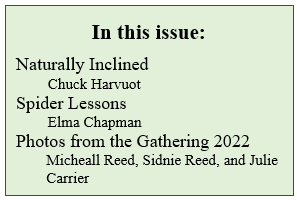
What a great State Gathering; I certainly enjoyed the weekend. Many thanks to Jody Heaston and Caitlin Stahl for their efforts in putting it all together. All the sessions were interesting, or fun, and the weather certainly cooperated.
At registration Friday evening, everyone received a ‘goodie bag’ containing fliers on wildflowers, trees, Fort Harrison State Park, Holliday Park, Eagle Creek Park, a list of birding trails in Indiana, an IMN button, an IMN sticker, an IMN cling, and several other items. There was a buffet dinner followed by several talks about IMN activities. Jody emceed the program. Todd Hutson told us about getting the IMN program started, Ginger Murphy talked about getting the DNR involved, Frank Rouse, past IMN Council President, explained how the Jr. IMN program began, and, thankfully, I didn’t notice anyone asleep while I shared information about what other Master Naturalist programs in the country are doing.
After the presentations were finished, there was time to socialize, look at IMN memorabilia, shop for some IMN swag, and listen to Micheall Reed, who with his wife Sidnie, was there to take photographs of the weekend activities, sing, and play his guitar.
|
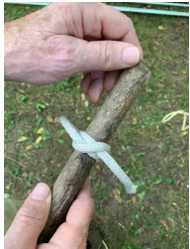
Saturday activities began at Holliday Park with a bushcraft activity. Sam, a Holliday Park naturalist (and former Eagle Scout), taught us how to tie a clove hitch and timber hitch. I learned the clove hitch pretty quickly, but I am still working on getting the timber hitch tied correctly. Sam then gave instructions on how to construct a tower. I was impressed at the “pioneer spirit” of our IMNs as they worked on the project, really good examples of enthusiasm and teamwork.
Then we divided into two groups: one group followed Caitlin on a short hike as she explained the history of the park. She led her group past the foundation of the old Holliday house, followed a path through wooded areas near the White River, (named either for the rapids or the many mussels early settlers saw in the river reflecting light), past a “hummingbird warzone”, weaved our way through a large rock garden, past “The Ruins” and back to the Nature Center.
The other group enjoyed a PowerPoint presentation about plant and animal relationships, given by Kristin, another naturalist at Holliday Park. We learned about the three types of symbiosis, (mutualism, commensalism, and parasitism), mimicry and diapause with insects, and how this all helps keep the ecosystem in balance. There were quite a few questions after the presentation, indicating a high level of interest.
|
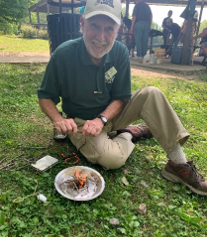
After the first session was finished, the two groups switched places, so everyone attended each session. After the second session, we ate lunch at the Nature Center.
Then it was off to Eagle Creek Park for the afternoon sessions. We met at Lilly Lake, where Jenna, the manager of the Ornithology Center, led us through the woods to the center. Once again, we divided into two groups. One group took a behind the scenes tour of the Ambassador Raptors, (a barn owl, bald eagle, peregrine falcon, and a turkey vulture), while the other group explored the Ornithology Center, a truly fascinating place; then the groups switched.
When both groups had completed both sessions, it was back to Lilly Lake for two more sessions, one on wild animal rehabilitation, and the other on fire-building. Dawn, a naturalist at Eagle Creek, explained the proper procedures when finding and rescuing baby birds and mammals. She had brought with her a young snapping turtle and young opossum, which were under their care. In the other session, Fire-Building 101, we each received a fire-starting kit, and Leslie, another naturalist at Eagle Creek, showed how to use it. In a short time, there were many small fires blazing away. We had snacks and switched sessions for the final time. Jody concluded our time at Eagle Creek with some closing comments, including possible sites for the 2023 State Gathering, (Versailles SP? Clifty Falls SP?) and sent us on our way, some to kayaking, some to dinner and some of us on our way home.
As I headed out of Indianapolis on 31, it started to rain. As traffic slowed, I thought, well, at least we made it through the day without getting wet. About 10 minutes later, as I drove out of the rain, I noticed a full rainbow to the east. Now that was a better ending to the weekend.
While writing this summary of the Gathering, thinking about the activities we enjoyed, and the camaraderie of the people from all different parts of the state, I thought of the John Muir quote I used to conclude my talk on Friday night, “Of all the paths you take in life, make sure a few of them are dirt.”
|
 |
Teaching about Spiders
By Elma Chapman
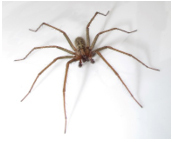
A short workshop was given by Jody Heaston as the different hiking groups reconvened at the end of the Gathering in 2021. (I saved this information, figuring it would be more timely in October than it would have been if I put it in the winter edition earlier this year.) If you’re ever going to teach a lesson on spiders to a group of kids, she has multiple resource ideas for you.
First of all, after-Halloween sales at stores are a great place to pick up all things spider at bargain prices. A stuffed spider is a good choice to make spiders less “yucky” for those hesitant to see the good side of spiders. There are spider rings, plastic spiders, even spider headbands. Never underestimate the power of visuals to grab interest.
Second, there are several great guides to spiders. The Ohio Division of Wildlife has a downloadable comprehensive guide, The Common Spiders of Ohio Field Guide. Another good guide is Spiders and their Kin, part of the Golden Guide series published by St. Martin’s Press. There is also Web Watching: A Guide to Webs & the Spiders That Make Them by Larry Weber.
Jody also has several songs typed up and a playlist of spider songs. If you want to stay in their heads, teach kids a spider song. There was a handout showing how to draw spiders correctly, and two handouts with directions for making a spider finger puppet. Another handout showed the different kinds of webs and how an orb web is built. (Jody might be willing to email you some of this, if you ask her nicely!)
Did you know spiders are identifiable by their eye patterns? Those of us present at Jody’s presentation had the opportunity to pick up a chart with the different patterns. She also shared with us a Christmas legend about spiders and several bits of spider trivia. Did you know spiders were sent into space on Skylab? It took them a while to figure out how to spin a web without gravity, but the once they started spinning, the webs were perfectly symmetrical. Or did you know that Native Americans collected spider webs? The anchor lines of orb webs are strong enough to be used for fishing lines!
Who knew spiders could be so entertaining?
Can you match the spider eye pattern to the correct spider family?
|
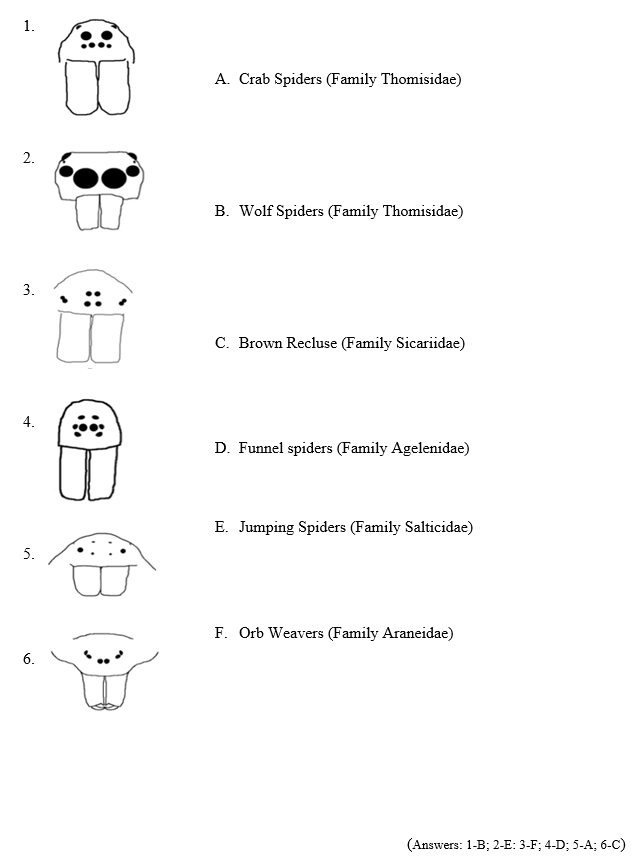
Scenes from the 2022 Gathering at Fort Harrison State Park and Indy Parks
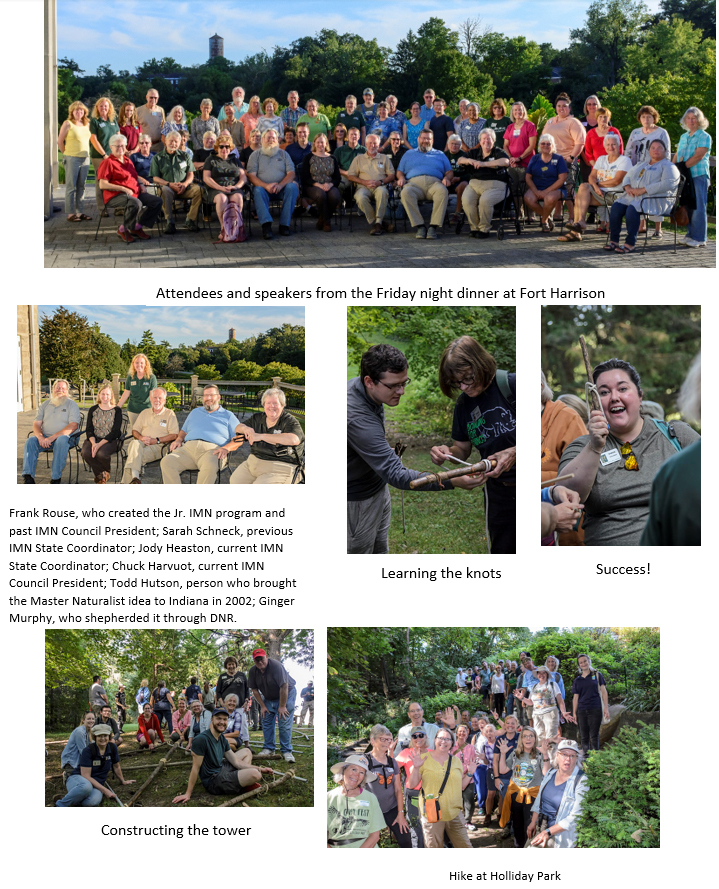
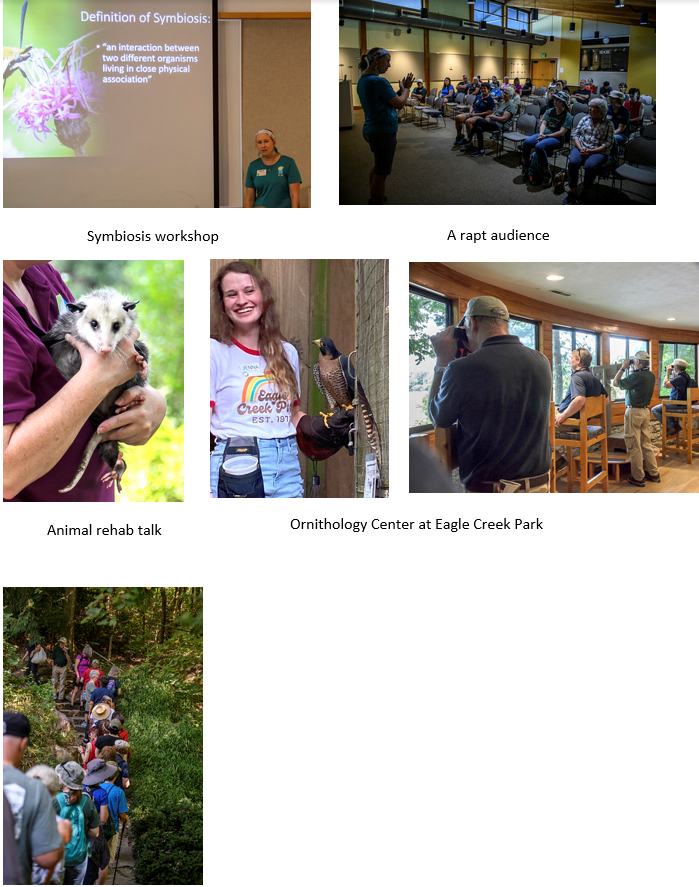
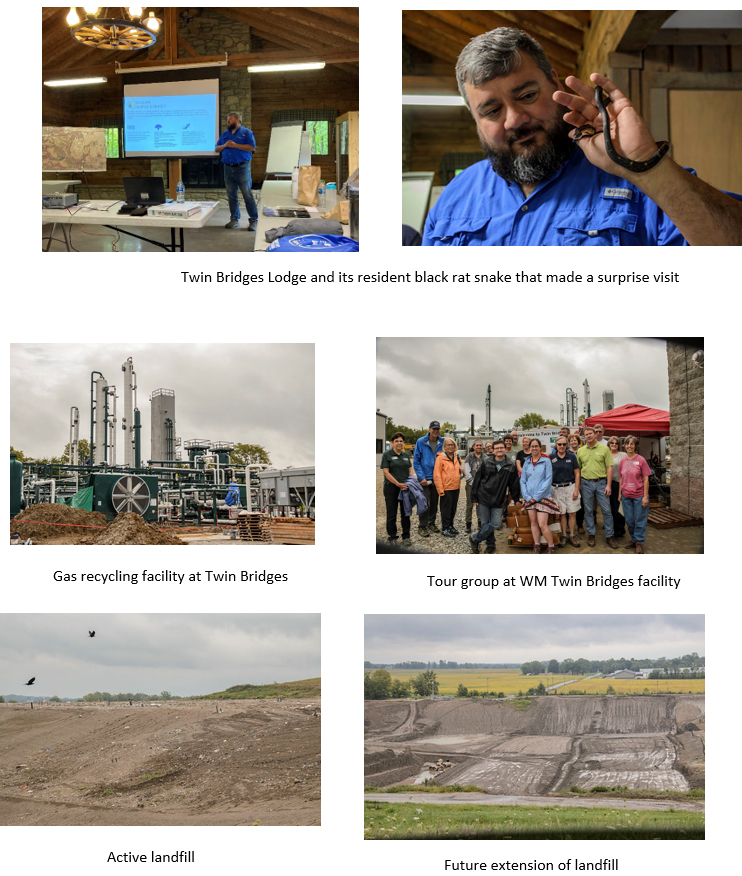
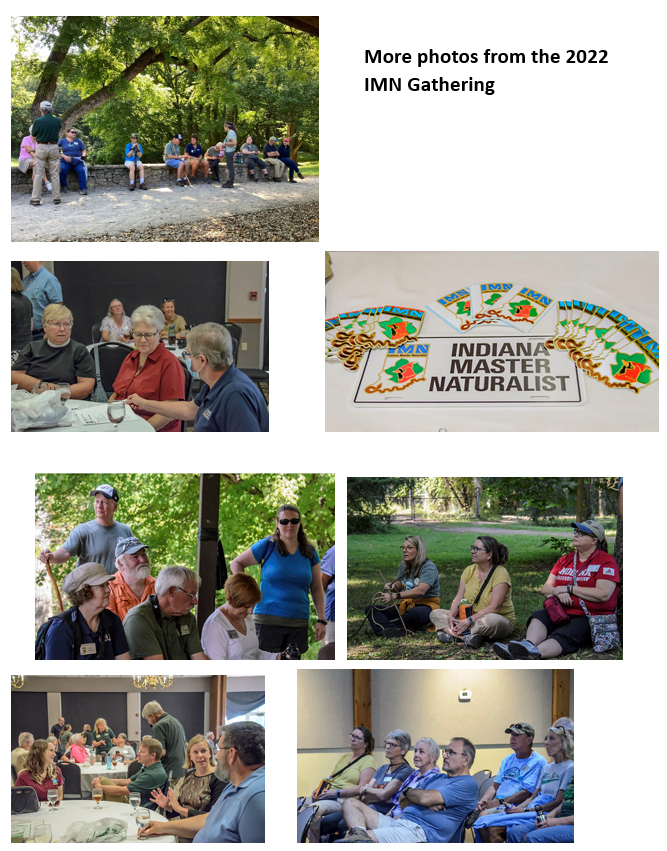
|
|